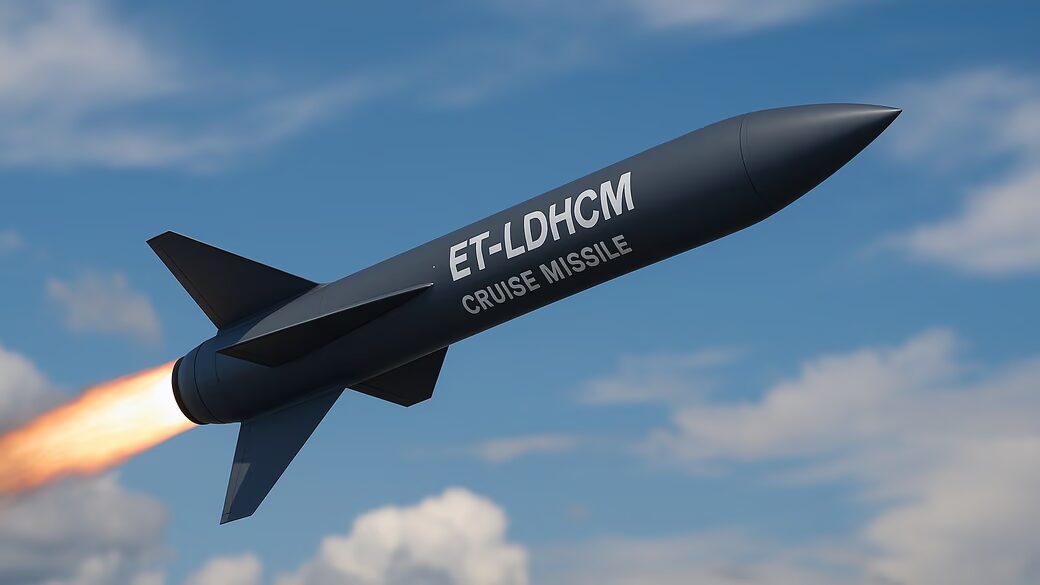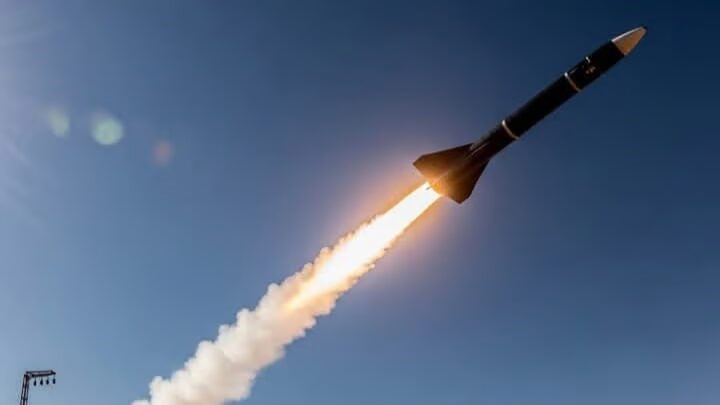
India is preparing to take an important forward step in defence technology when conducting the test of the Extended Trajectory – Long Duration Hypersonic Cruise Missile (ET-LDHCM). This missile has been made by only the great Defence Research and Development Organisation (DRDO) under the supervision of Project Vishnu. Many in the region engaged in advanced hypersonic defence technology are calling it game-changing.
Let’s see further what the ET-LDHCM does to India by adding its strategic armament.
ALSO READ- India Wins Presidency of IIAS
What Is ET-LDHCM?
An extension of the cruise missile’s trajectory, hypersonics that are currently in development-ET-LDHCM is the next generation in hypersonic weapons. The missile can travel above 11,000 km/h, destroying air defences and deep-penetrating targets within enemy territory.
Main Developers-
- DRDO, India’s prime defence R&D concern
- HSTDV team associated with the Hypersonic Technology Demonstrator Vehicle
- It was executed and designed at Dr APJ Abdul Kalam Missile Complex, Hyderabad city
By developing the Indian Hypersonic Missile ET-LDHCM, India aims to establish itself as a technology-driven defence power. This missile is the product of multiple decades of research, trials, and error correction in developing a hypersonic platform that is efficient and supported by indigenous expertise.
Development of the missile took innumerable hours of simulations, modeling, and ground trials to ensure that all operational criteria were met. The Indian innovation ecosystem, a combination of all private and public sector contributions, was a major enabler for achieving global standards in missile technology.
Since the announcement of testing, there has been a buzz not just in India but also in the strategic circles of neighbouring countries, sparking discussion over shifting security equations in Asia.
Top Features of the India’s Hypersonic Missile ET-LDHCM-
Speed:
Mach 9+ (Over 11,000 km/h)
Three kilometres per second—far too fast for current radar and interception systems.
Range:
- Effective range: 1,500 km
It can strike vital targets in Pakistan and China.
Precision Strike Capability:
- Targets include: Radar stations
Military bases:
- Underground bunkers
- Air defence installations
Besides, the ET-LDHCM has been integrated with advanced onboard guidance software for AI-assisted trajectory recalculations, which will ensure further flexibility in the real-time execution of missions.
Tactical Advantage: Why ET-LDHCM Matters-

An Edge Over the Strategies of Adversaries:
With a modern air defence system in Pakistan and China, somewhat of a near-impossible task concerning the speed and low-altitude flight of ET-LDHCM exists to detect and destroy it.
Breakthrough in the Arms Race for Hypersonic Weapons:
While Russia, China, and the United States may be cementing the future of hypersonic technology, India’s successful development of a long-range cruise missile, entirely in the country, places it among an elite club.
India now stands in a position where it can actively participate in setting norms for the responsible use of hypersonic weapons, potentially acting as a regional stabiliser rather than merely an arms competitor.
The missile also creates internal momentum for India’s defence industry and increases investment into such ancillary fields as AI-based navigation, propulsion systems, and material sciences.
Designed for Stealth and Adaptability-
Dynamic In-Flight Navigation:
Unlike conventional cruise missiles, ET-LDHCM can change direction mid-course, making it even more difficult for the enemy to lock onto or intercept.
This mid-course correction is governed by onboard processors that can recalibrate based on terrain, threat detection, and mapping of airspace as features redefine the very manner in which modern warfare scenarios are approached.
The characteristics of stealth and adaptability also permit its efficient operation under conditions without GPS, thus giving India an edge over the rest in jamming-heavy warfare situations.
Owing to the low-detection profile, the missile may also be preemptively launched to suppress enemy air defences ahead of manned aerial missions.
Built Under ‘Make in India’-

This hypersonic cruise missile is not just an armament; it is well-known as a national milestone. It displays India’s self-sustaining capabilities in leading-edge defence machinery.
- Reduces dependence on foreign providers
- Encourages innovation in the defence manufacturing ecosystem
With every step of its development, ET-LDHCM truly embodies the vision of Atmanirbhar Bharat. The entire life cycle, from research and development to prototype testing and then full-fledged development, has been under Indian minds.
Its result would generate spillovers on various civil technological domains-like material engineering, avionics, and space technology. This, in turn, strengthens the national scientific infrastructure.
It has created high-skilled jobs and opened doors for startup defence companies, placing India in breakthrough innovations.
What This Means for Pakistan and China-
India’s Hypersonic Missile ET-LDHCM offers various benefits to India:
- Quick-strike possibilities
- More precise deterrent means
- Enhanced manoeuvrability during high-stress defence situations
ET-LDHCM can also enhance India’s bargaining position during diplomatic bargaining and multilateral security discourse.
Future Capabilities and Deployment-
It is said that future versions of this missile will include:
- nuclear-capable payloads
- variants for anti-ship or anti-satellite capability
That discussion also includes AI-managed swarm hypersonic launches that can penetrate any defending grid through saturation attacks. Plans for deployment will also require collaboration with the Indian Air Force and Navy in future-ready multi-domain operations.
Conclusion: A Giant Leap for Indian Defence-
In the present context, India’s Hypersonic Missile ET-LDHCM is not just a weapon; it is also a technological assertion. It asserts that India can manufacture, test, and deploy hypersonic technology worthy of the world under its flag. With rising tensions and the shifting global power matrix, the clear assertion India is making is: we are ready, we are capable, and we are self-reliant. India’s defence journey is evolving quickly, and the ET-LDHCM is just the beginning. For regular updates on national defence, hypersonic technologies, and military strategy, stay tuned to our GeniusWindow website.
FAQs-
ET-LDHCM, a very famous Extended Trajectory-Long Hypersonic Missile. It has been made for supersonic range, faster speed, and precise strikes.
It strengthens India’s defence capabilities, being stealthy, fast, and precise, thereby enhancing India’s strike potential for penetrating enemy air defences. It mainly shows the rest of the world India’s technological power and victory in the sector of hypersonic battlegrounds.
Yes, the missile is fused with some advanced tracking and guidance capabilities that allow it to alter the flight path midcourse and engage moving enemy units.
